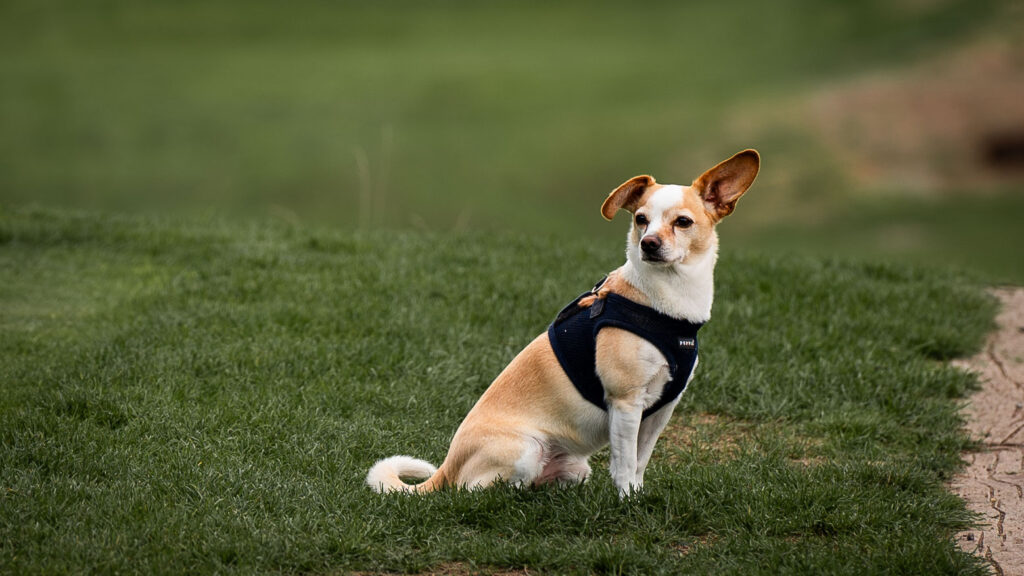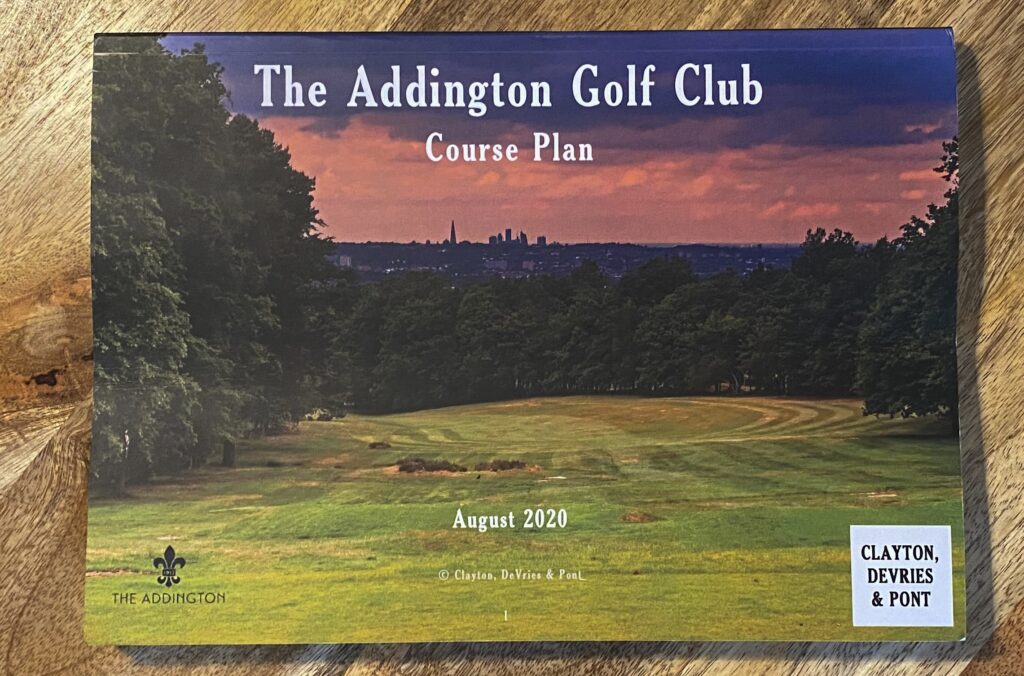In September 2020, we recorded a podcast with Jasper Miners & Sam Cooper from @evalu18golf. The pandemic was raging and a certain character – Ryan Noades – had been sending out dossiers to the wider golfing community about a restoration to his course at somewhere called ‘The Addington’ in Croydon, only 10 miles outside of central London.
This promised to be one of the most daring and radical restorations Britain had ever seen, reverentially bringing back the great layout that Abercromby & Colt had left behind before the onset of WWII. On that podcast Jasper uttered the immortal words;
‘’If you don’t know about The Addington now, you will know about it in 5 years time because it will be world class.
It’s a sensational golf course, but because they haven’t touched it or messed with it, it’s actually right where it needs to be to become world class again…’’
At the time those words didn’t really mean much to us. None of us had visited the club, and none of us really appreciated the rarity of Abercromby’s designs or his artistic flair which saw him partner with Fowler, Simpson & Croome in the early 1920’s. I think we put a picture of the stacked dossier on Instagram accompanied with a soundbite from the pod and very quickly we were in touch with Ryan who was keen to have a copy for the club’s social media as well. That sparked the beginning of a good friendship, not just with Jasper & Sam, but also Ryan who we have been hanging out with ever since, and as such have enjoyed a ringside seat to the restoration of The Addington which is now into its 4th year.
Like many of the great inland golden age classics that litter our golfing landscape in Britain, tree clearance was the first item of business, except this was more than just a few irritating conifers that were beginning to encroach on the playing lines. This was a wholesale change which saw the role of trees completely transformed in the space of twelve months. Gone were the overcrowded corridors of trees, and instead only the best were saved which now stand with room to breathe and serve as sightlines across the rolling terrain.
To understand why we don’t see this happen in many other clubs in Britain, it’s important to note The Addington has always been a proprietary owned golf club. In short, there is no need for committees or meetings, compromises over a bunker that Derek installed when he was captain or a tree that someone feels particularly attached to for no good reason whatsoever. This means that change can happen fast, and provided he is benevolent, then the dictator has scope to make sweeping improvements without the shackles of internal club politics or unnecessary red tape. This isn’t to say Ryan is just ‘shooting from the hip’, in fact quite the opposite. He is guided by the triumvirate of Clayton, DeVries & Point, surrounds himself with knowledgeable (and in our case less-knowledgeable) industry folks and challenges them on their views and seeks to find the right outcome for his club. He brings the membership along on the journey with him, monthly course walks are fully booked with members eager to talk about the improvements to the course and Ryan only too willing to spend the time providing his rationale. Even the recently developed short game area involved a detailed consultation process with the membership, collecting nominations of shots on the course that people wanted to see replicated in a practice environment.

It hasn’t always been this way. Those from another generation may recall the years in which Moira Fabes owned the golf club – having inherited the shares from her father in 1964 – she protected the club to such an extent that she seldom cut the lawns, watered it only with a garden-hose and only allowed people through the gates who she felt should be allowed to see Abercromby’s masterpiece. Not all dictatorships work out.
But strangely enough the Fabes era was arguably the best thing that happened to ‘the Add’, a reign as chairman for 40 years where no ill thought bunkers were put in place, or greens moved around and contours muted. Instead, it was simply left for the trees to grow. Queue our next soundbite, this time from Frank Pont;
‘’It’s like finding an old painting in the attic. You need to peel away the layers of dust but underneath it’s a Rembrandt…’’
All of sudden, the quote on that podcast with Jasper made complete sense. This restoration was simply about peeling back the layers to reveal what was originally there, rather than having to interpret the intent of Colt and Abercromby. The course they had designed was no doubt the reason why the car park in its golden years was almost exclusively filled with Rolls Royce’s, frequented by London’s elite and was granted Royal patronage by King George VI in 1937.
We’ve digressed, so having visited on a misty and dreary November day in 2020 – nonetheless impressed by the elevation change, the beautiful ‘Indiana Jones-esque’ bridges and some wonderful green sites – it’s fair to say none of us could quite see the full potential that Ryan seemed to, brimming with passion and already talking about the new pin placements that would be coming into play and a change to the clubs routing which would see players start on the top of the hill on 5, with the 4th to become the closing hole. Just as Abercromby has planned.

Several visits since have seen some wonderful days at The Addington, more recently documenting some of the changes with aerial and ground photography. The difference from that November day to now is simply staggering.
The impetus for this article however came on a recent visit to see the work underway with Mike DeVries to restore ‘the lost green’ left of 12. An ancient black and white image clearly shows a green to the left, ideal for a short drop-shot par 3 from the back of 9. How the routing worked back then and what hole went in place to facilitate 18 rather than 19 holes remains a mystery, and is yet another puzzle we can thank a clubhouse fire for back in 1952.
Stood on a undulating heap of sand and gravel, having been bamboozled by the dialogue between Mike, Frank and Ryan over the use of an infinity edge on the back of the green and whether the slopes and mounds that had been restored a) matched that of the image that the club are working to and b) were commensurate with the biblical scale of the property, attention turned to the seeding of the surrounds and where the 250mm core for the green should extend to versus the more shallow 150mm rootzone for the surrounds.
By now, the 30 degree heat meant myself and ‘Arlo’ (Ryan’s confidante and long suffering assistant pictured below) were desperate for some shade and a sit down, and yet a 30 minute exchange ensued about pin locations, runoffs and how mowing lines will evolve over the coming years. Remarkable attention to detail that shows just how much Ryan cares about this club that his father – Ron Noades – bought from Moira Fabes back in 2006.

Course Manager – Kerr Rowan – joined just over a year ago from the venerable West Sussex (‘Pulborough’) and now oversees the changes in the agronomy, restoration of the heather beds, installation of a bunker renovation scheme and maintaining the billiard like surfaces which are stimping above 10 with ease.
This is a club that is going places. That conversation with Jasper & Sam was in 2020, and in September we will be three years into the 5 year timescale that was given where people ‘’will know about The Addington’’.
I think the club are ahead of that timescale, but I guess that’s the benefit of having a benevolent dictator!
–
Tee times can still be booked to see The Addington and we would highly recommend it. Don’t trust us? Go and judge it for yourself. Link: https://www.e-s-p.com/elitelive/book_date.php








